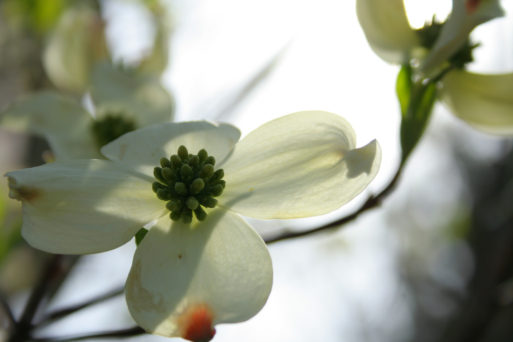Each month Kathleen Clohessy, R.N., offers a new perspective on living with a terminal illness. Kathleen comes to SevenPonds with 25 years experience as a registered nurse caring for families and children facing life-threatening illness. She began her career in the Pediatric Intensive Care Unit at Nassau County Medical Center in New York, and, after relocating to California, spent 15 years as an R.N. and Assistant Nurse Manager at the Pediatric Oncology & Bone Marrow Transplant Unit at Lucille Salter Packard Children’s Hospital at Stanford. She uses her extensive personal knowledge and expertise to enlighten our readers regarding the challenges associated with chronic illness and their profound effects on family relationships and human dynamics.
Living with a terminal illness is about living in no-man’s-land. After the initial shock and numbness and dismay begin to abate, there is a resumption of something that feels almost like your former life. Treatments and doctor’s visits and medicines become the new normal, and a strange but nonetheless familiar rhythm begins to emerge. Life is not the same: Life will never be the same. But much goes on exactly as before. You still tuck your kids in at night; you still give your spouse a goodnight kiss. You still get up each morning to find that the sun has risen exactly as it has risen every day of your life.
In this limbo between the present moment and approaching death, two conflicting needs arise. One is for pragmatism and acceptance. The other is for hope. Finding a balance between the two is, perhaps, the greatest challenge that any person ever has to face.
“Hope is a thief,” says Jackie, who has recently learned that, after a brief period of remission, her breast cancer has come back. “Hope lulls you into complacency. It’s so easy to pretend that everything is going to be OK…to forget that you have this horrible disease. Now it’s starting all over again and I just don’t know where I’ll find the strength to go on.”

Credit: pixabay.com
Like all patients who “defeat” cancer only to have it return, Jackie is devastated. After enduring months of painful and disabling treatments, she is now facing the stark reality that the cancer may very well win the battle after all. Hope sustained her before. Now she believes hope has betrayed her — tricked her into believing that she won. Her bitterness is palpable and raw.
But can Jackie live without hope? Can she rise to the challenge and fight the battle one more time without it?
Can anyone?
When I was working as a pediatric oncology nurse I sat in on many, many “consent conferences” during which the doctors would tell patients and their parents “the news.” These were always difficult, gut wrenching, emotional conversations. And they inevitably ended with the same question: “What are our chances? What are the odds that my child can survive?”
And just as inevitably the doctor would answer the same way each time. “I can give you statistics, but they mean nothing for you and your child. For you, the chances are zero or 100 percent. There is nothing in between.”

Credit: powellgardens.wordpress.com
I recall one especially difficult conference with Cheryl, the mother of an 8-year-old boy who had just been diagnosed with acute myeloblastic leukemia. It was not a good diagnosis. At the time, patients with AML had a five-year survival rate of about 25 percent. Cheryl was a single mom, and her son, Alan, was an only child. She took the diagnosis very hard. She was absolutely convinced that her son was going to die, and completely terrified that losing him would be more than she could bear.
What’s more, even as time wore on and Alan continued not just to survive but to do remarkably well, her terror endured. It defined her existence; even more importantly, it defined her relationship with her child.
After one particularly emotional day when Alan was in the hospital for chemotherapy, I sat down with Cheryl and had a very frank discussion with her about her feelings and what they were doing to her life. She told me she couldn’t control herself — that no matter how hard she tried all she could think about was losing her son. After months of working with her to help her work through her fears, I was frustrated, and I said something to her that I had never said to a parent before:
“Don’t you realize that you’re wasting the time you have left” I said. “All this pain you’re feeling–all this fear–isn’t about anything real. What’s real is that your son is alive right now and you can’t enjoy him at all because you are living in some future reality that may never come to pass!”
Cheryl was cheating herself and her son of the joy they could have if she would just let herself leave room in her heart for a little bit of hope.
As soon as the words came out of my mouth I felt horribly guilty. This was not something an empathetic pediatric oncology nurse was supposed to say. But I was so angry! By focusing only on her fear, Cheryl was cheating herself and her son of the joy they could have if she would just let herself leave room in her heart for a little bit of hope.
Oddly enough, Cheryl did not become angry at what I’d said, although I fully expected her to be incensed. In fact, for the first time since we started talking, she stopped crying and simply stared at me. And suddenly it became glaringly obvious to me that it had never occurred to her that her emotional state was affecting not just her but her son.

Credit: pixabay.com
Cheryl didn’t change overnight after that conversation, but she did change. Her demeanor softened. Her tears lessened. And her relationship with Alan became increasingly more relaxed. And as he continued to improve and eventually finished his chemotherapy, it became obvious to all of us that Alan was probably going to be one of the one in four kids with AML who survived. Years later, he came back to visit the unit, tall and handsome and still very much alive, Cheryl beaming at his side.
When we live in the present moment, we find a way to balance the inevitability of death with beautiful unfolding that is now. For those of us who are fortunate enough to have little information about the timing and manner of our deaths, that is an abstraction that often escapes us. But for cancer patients, it is, perhaps, the only way to keep hope alive.
“Once you see what the heart really needs, it doesn’t matter if you’re going to live or die, the work is always the same.” -Noah Levine

 Walking the Tightrope of Terminal Illness
Walking the Tightrope of Terminal Illness



 Passing of Beloved Comedian Births a New Comedy Festival
Passing of Beloved Comedian Births a New Comedy Festival

 The Spiritual Symbolism of Cardinals
The Spiritual Symbolism of Cardinals














